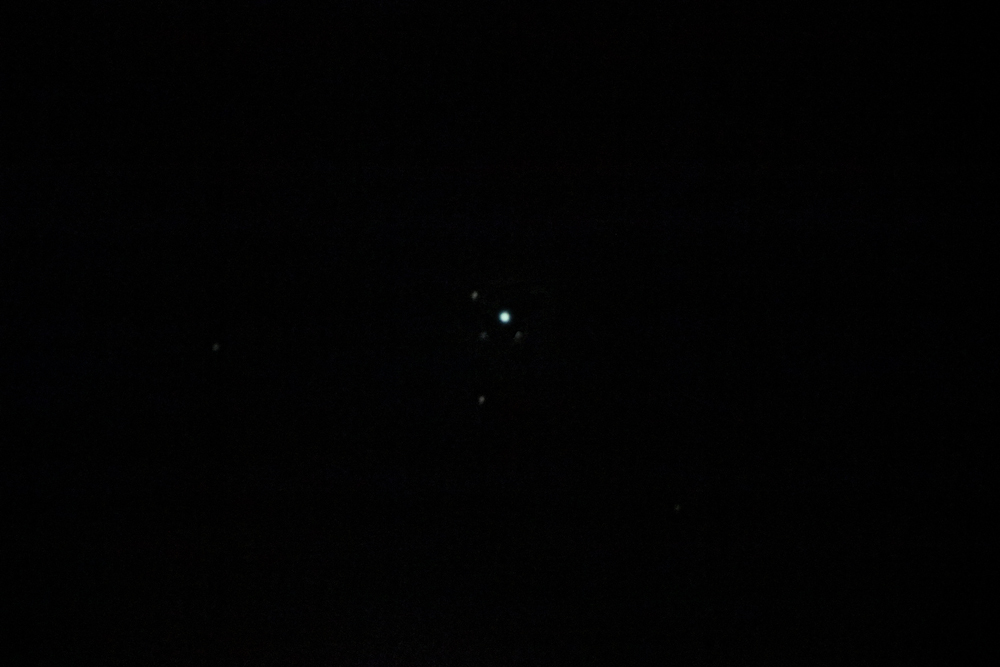| |
 |
The gas giant Uranus and its moons are about 1.8 billion miles from Earth, so they appear small when viewed through a telescope. The disk of Uranus is only about 4 arcseconds in diameter as seen from Earth. (As a comparison, our Moon has an apparent size of about 1800 arcseconds.) Still, the blue-green disk of Uranus is easy to see in amateur telescopes using high power. With a large enough scope, some of its moons can also be glimpsed. I have seen a few of them, with difficulty, through my 18-inch Dobsonian telescope.
The fifth brightest moon of Uranus, Miranda, was too dim and close to the planet to be visible on this night.
4-second exposures were used to capture the moons, and a 1/15-second exposure of Uranus was pasted into the image to avoid overexposing the disk of the planet.
| |
Diameter (miles) |
Magnitude |
| Uranus |
15,759 |
5.8 |
| Titania |
980 |
14.1 |
| Oberon |
945 |
14.3 |
| Ariel |
720 |
14.3 |
| Umbriel |
730 |
15.0 |
Image details: A 1/15-second exposure of Uranus, and 22 4-second exposures of the moons, all at ISO 12,800, taken with a Canon T6i camera through a 14" Meade
850XL telescope at f/16.
November 27, 2017
|
